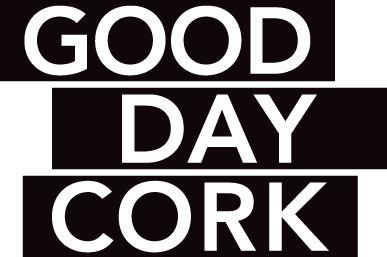Turbines to Bridges
By Angela Nagle
Cork-based Angela Nagle describes the adventure of transforming de-commissioned wind turbines to bridges. Angela is a PhD Candidate at UCC’s School of Engineering working on the Re-wind Project.

In February 2018, I went to an event at the Sirius Art Centre in Cobh where I listened to Dr. Ger Mullally speak about the Anthropocene. The talk moved me so much that I contacted Dr. Mullally that very week to inquire about doing research with him. He suggested I interview for a PhD position with Re-Wind, a tripartite research team between Georgia Tech, Queen’s University Belfast, and UCC looking at repurposing discarded wind turbine blades. It sounded quite random, and I wasn’t particularly interested in wind energy, but I gave it a go. Two months later, I’d given away the Baby Markets and started with Re-Wind.
My research is on Life Cycle Assessment, which attempts to calculate how much environmental impact may be caused by a product or process. When a product is made, material must be extracted from the ground, processed into goods, shipped, used by consumers, and discarded. Energy and materials are consumed at each of these stages. This is our typical model for consumption, ‘take, make, dispose’ and it is referred to as the Linear Economy. It is very different from how nature works, in which waste is reused. Our project aims to apply the principles from another way of running the economy, called the Circular Economy, which tries to keep things in use for as long as possible, share things, or provide services rather than goods. The Circular Economy is closer to how nature performs.
Keeping things in use for as long as possible can’t be wrong.
Thousands of wind turbines are being constructed all over the world to help reduce the carbon footprint from energy generation. Turbines have a design life of 25 years. When they are decommissioned, most of the parts can be recycled. The three blades, however, are made of a combination of glass fibres and epoxy, which cannot be separated for recycling. They are huge, and fill up landfills quickly. They are also incredibly strong, weather resistant, well-engineered and perfect for reuse in large civic structures!
In conjunction with Cork County Council, our team is designing a pedestrian bridge on the new Midleton to Youghal greenway using two of these blades as the superstructure. The blades were donated by Everun in Belfast, and transported to Munster Technical University (formerly CIT). One of the blades will be tested to failure, and the other two used as the girders in the bridge superstructure. Research will be conducted not only on the design and construction of a bridge made from this unusual material, but on the ability to replicate this approach for other greenways around Ireland.
The Circular Economy is closer to how nature performs.
This project is sustainable in so many ways: Cycleways are planned all over Ireland, and the Irish 2020 Program for Government has allocated €1 million/day to pedestrian infrastructure. Ireland also ranks 3rd last in the EU on our Circularity Metrics, which impact on performance against Sustainable Development Goal (SDG) #12 (Sustainable Consumption and Production). Building these bridges, in line with EU regulation which encourages Circular Public Procurement, will improve our standing on SDG12. And being part of improving our cycling infrastructure is wonderful as well. My dream is to have this idea catch the attention of Eamon Ryan, and, once the amount of Irish blade waste ramps up, I would love to see this model spread across the country.
During the pandemic, what keeps me going is the thought that our idea of what is ‘normal’ is being reset. I feel that people’s view of the world is like a clean slate, on which new norms can take hold. Reuse feels right and can be done on a large scale – we just need some projects that can pique our imagination.
My research is on Life Cycle Assessment, which attempts to calculate how much environmental impact may be caused by a product or process.
No related posts.

